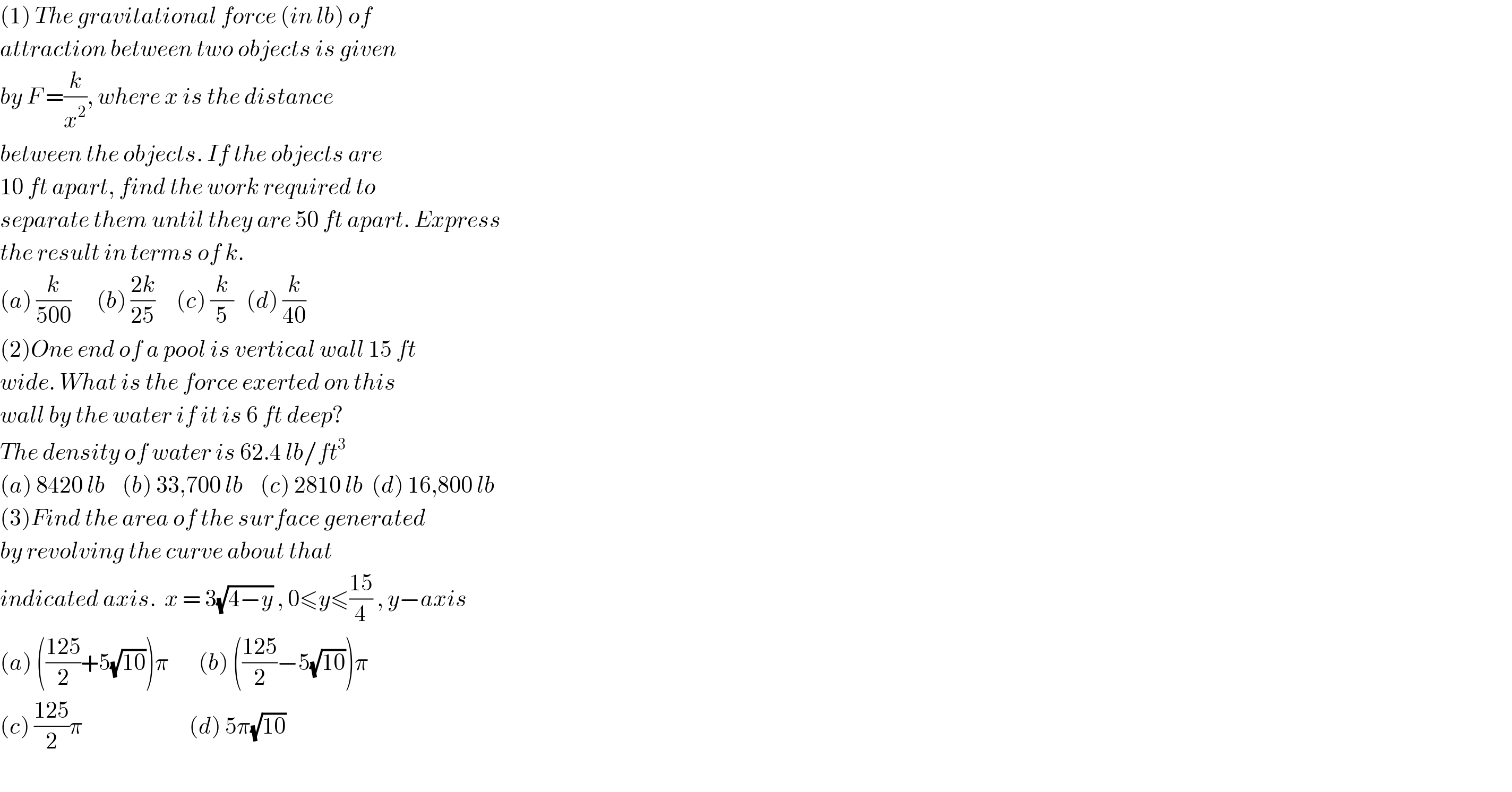
Question and Answers Forum
Question Number 124976 by liberty last updated on 07/Dec/20

Commented by Dwaipayan Shikari last updated on 07/Dec/20
![Work done =∫_(10) ^(50) (k/x^2 )dx=[−(k/x)]_(10) ^(50) =((2k)/(25))](Q124977.png)
Answered by bemath last updated on 07/Dec/20
![(3)S = ∫_0 ^(15/4) 2πx (√(1+((dx/dy))^2 )) dy x = 3(√(4−y)) ; (dx/dy) = ((−3)/(2(√(4−y)))) then 1+((dx/dy))^2 =1+(9/(4(4−y)))=((25−4y)/(4(4−y))) S = ∫_0 ^( ((15)/4)) 6π(√(4−y)) (√((25−4y)/(4(4−y)))) dy S= 3π∫_0 ^((15)/4) (√(25−4y)) dy = [(1/((3/2)(−4)))×3π×(√((25−4y)^3 )) ]_0 ^((15)/4) = −(π/2) {(√(1000))−125 } = ((125π)/2)−5π(√(10)) = (((125)/2)−5(√(10)))π](Q124981.png)
Answered by bemath last updated on 07/Dec/20

| ||
Question and Answers Forum | ||
Question Number 124976 by liberty last updated on 07/Dec/20 | ||
 | ||
Commented by Dwaipayan Shikari last updated on 07/Dec/20 | ||
![Work done =∫_(10) ^(50) (k/x^2 )dx=[−(k/x)]_(10) ^(50) =((2k)/(25))](Q124977.png) | ||
Answered by bemath last updated on 07/Dec/20 | ||
![(3)S = ∫_0 ^(15/4) 2πx (√(1+((dx/dy))^2 )) dy x = 3(√(4−y)) ; (dx/dy) = ((−3)/(2(√(4−y)))) then 1+((dx/dy))^2 =1+(9/(4(4−y)))=((25−4y)/(4(4−y))) S = ∫_0 ^( ((15)/4)) 6π(√(4−y)) (√((25−4y)/(4(4−y)))) dy S= 3π∫_0 ^((15)/4) (√(25−4y)) dy = [(1/((3/2)(−4)))×3π×(√((25−4y)^3 )) ]_0 ^((15)/4) = −(π/2) {(√(1000))−125 } = ((125π)/2)−5π(√(10)) = (((125)/2)−5(√(10)))π](Q124981.png) | ||
| ||
Answered by bemath last updated on 07/Dec/20 | ||
 | ||
| ||